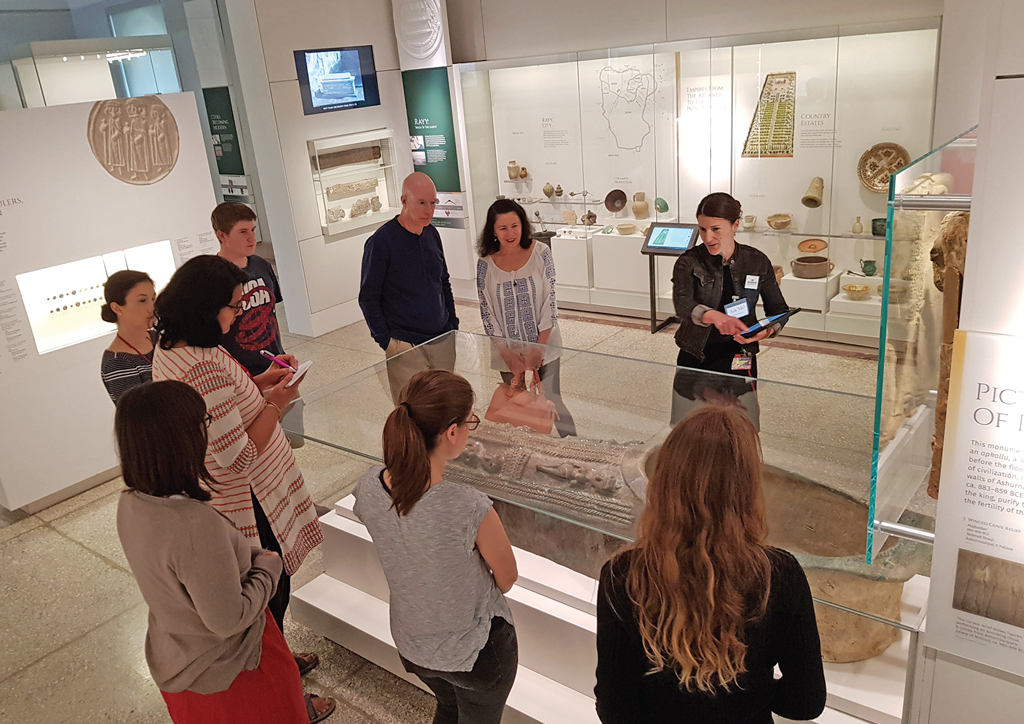AS A JOINT ENDEAVOR between the Penn Museum and the University of Pennsylvania School of Arts and Sciences, the Center for the Analysis of Archaeological Materials (CAAM) has brought together expertise in the archaeological sciences, facilities, Museum collections, and student research since 2014. At the heart of the Center is our commitment to teaching and mentoring Penn students in the interdisciplinary analysis of the human past. In any week, a large cohort of students comes to CAAM for classes, lab activities, recitations, and research. Our curriculum, open to all Penn students, offers foundational courses for the exploration of archaeological science, intermediate courses for a focus on specific fields of expertise, and advanced courses in which students work on original and independent projects. For a deeper engagement, students can enroll in our newly created Minor and Graduate Certificate in Archaeological Science. In all, CAAM is unique with its team of teaching specialists, innovative coursework, access to outstanding Museum collections, and fully- equipped laboratories. To celebrate five incredible years of growth, here is a glimpse, lab by lab, of how the Center has become a vibrant place at the Penn Museum for teaching and research.

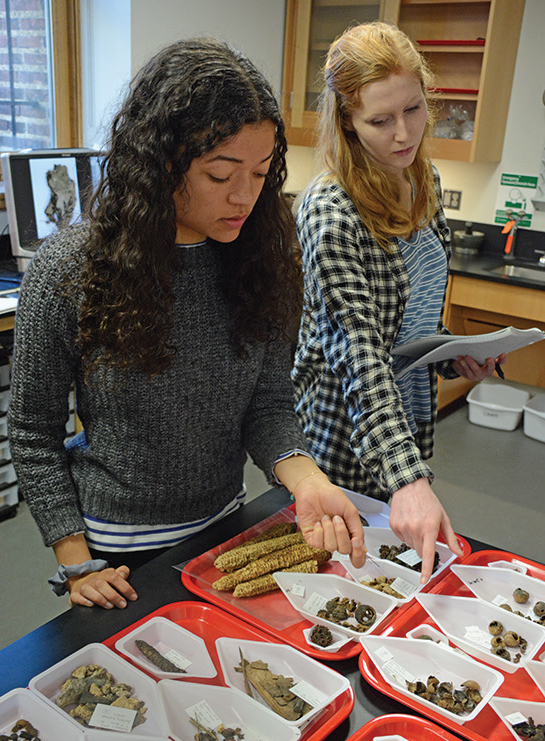
ARCHAEOBOTANY LABORATORY
The CAAM Archaeobotany Lab has expanded over the past five years to include innovative research projects from many different time periods and regions around the world. Our primary focus is the study of macrobotanical material from archaeological sites— seeds, nut shell, pods, and other plant parts that can be studied with low-power microscopy. Students and volunteers are working on macrobotanical research projects dating from the Paleolithic period (40,000 years ago) to recent history (150 years ago) at archaeological sites in Jordan, Israel, England, and Philadelphia. To identify preserved botanical specimens, we have created a large seed reference collection that consists of over 1,100 different specimens. We have also formed an experimental collection of spices, fruits, and even animal dung found in archaeological deposits. Students are then able to build on the skills they have developed in the Lab through the Summer Archaeobotany Program, during which they work at archaeological sites in Greece and the American School of Classical Studies at Athens (ASCSA) archaeological science lab.
In addition to macrobotanical material, two types of microbotanical remains, plant-cell phytoliths and starch granules, are studied using hands-on activities in the lab such as grain grinding and beer brewing. Our digital microscope has greatly aided in the analysis of archaeological wood, and a new high-power lens allows us to examine wood cells from even the most ancient of trees, the bristlecone pine. We are honored to house a large section of a 4,000-year-old bristlecone pine that was first used by Penn Museum researchers in the 1960s as part of their pioneering work with radiocarbon dating. Today this teaching tool helps connect our CAAM students with the long history of archaeological science research here at the Museum.
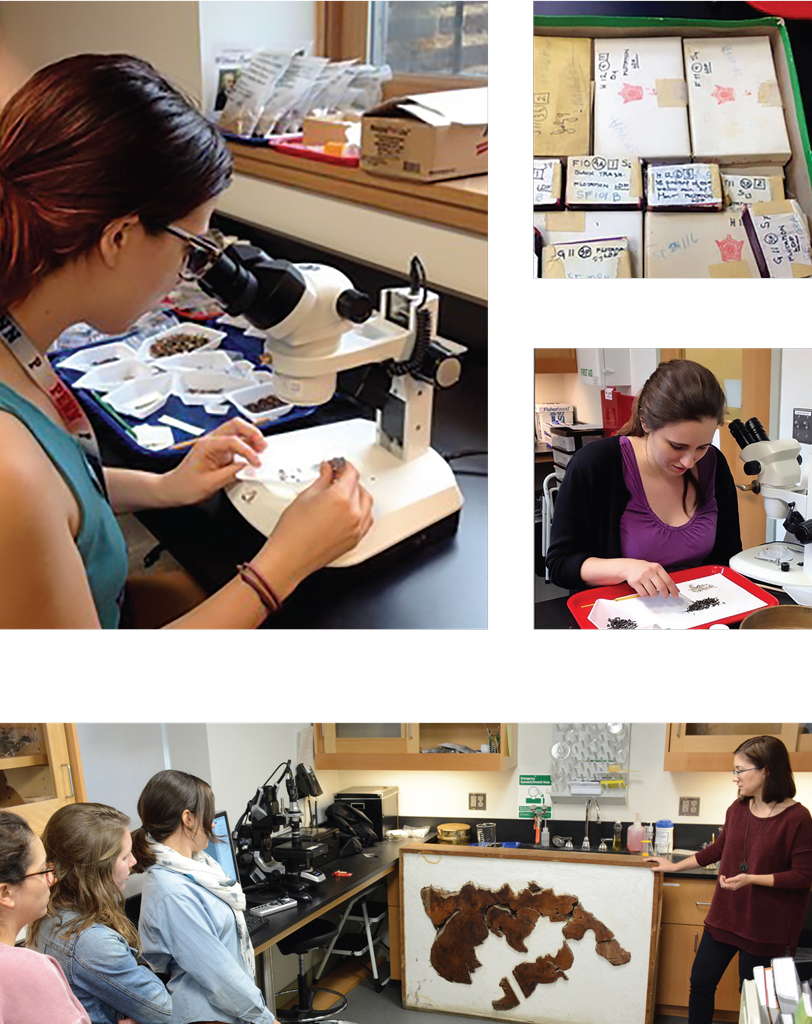
CERAMICS LABORATORY
The Ceramics Laboratory opened in January 2011, was integrated into CAAM in 2014, and continues to be a hub for microscopy and ceramic analysis. One of the key questions we can ask in this laboratory is where were the objects made. Knowing their location of production using petrographic analysis allows archaeologists to study patterns of trade and exchange between settlements and regions. The Lab is equipped for the in-depth study of pyrotechnological processes as applied to earthen materials. Transmitted polarized light microscopes, a reference collection of rock specimens and their matching thin sections, a kiln, a collection of soil types, geological maps, and thousands of additional thin sections provide the necessary resources for students to train in petrographic analyses of a range of objects, from pottery containers and faience objects to architectural materials such as fired bricks, tiles, stone, mortars, and plasters. Together, student research projects represent over 10,000 years of human engagement with the mineral world. Examples of current collaborative projects include Parthian glazed ceramic coffins from Nippur (Iraq), Late Bronze Age pots from Bamboula (Cyprus), ethnographic and archaeological ceramics from the Solomon Islands (Oceania), and historical garden containers from The Woodlands (West Philadelphia).

A large legacy collection of archaeological ceramic thin sections representing material from most curatorial sections of the Museum was created in the 1930s through the Work Progress Administration program. One of the many class projects using these early samples focused on tempering traditions from around the world, exploring how potters in Brazil mixed freshwater sponge spicules with clay, while in Alaska, potters used bird feathers instead to strengthen the clay paste. Student petrographers learn skills such as writing professional technical reports and how to conduct raw material surveys using geological maps, knowledge of drainage systems, and landscape topography. Outside of coursework, a small but dedicated cohort of volunteer petrographers and high school interns contribute to the research activities of the Laboratory. For a multiscale analysis of ceramic materials, instrumentation housed in the other labs are often used, such as x-ray radiography for microstructural analysis and scanning electron microscopy for elemental composition of glazes and ceramic bodies.

CAAM routinely uses the Conservation department’s X-ray radiography facility to image, document, and analyze objects and specimens. Since 2014, hundreds of radiographic images have been acquired using this non-destructive analytical technique. The collaboration between the two departments goes beyond the sharing of instruments and has been formalized by the creation of CAAM classes and recitations taught by Museum conservators. Advanced coursework on conservation in archaeology explores the scientific conservation of cultural materials from archaeological contexts.
The Ceramics Lab’s rock specimen collection provides reference material for the study of flaked and ground stone tools. Lithic analysis is a key component of our curriculum and is one of the eight fields of specialization taught in CAAM. Building from the work of the late Prof. Harold Dibble, flaked stone experimentation and analysis continues in the Laboratory.
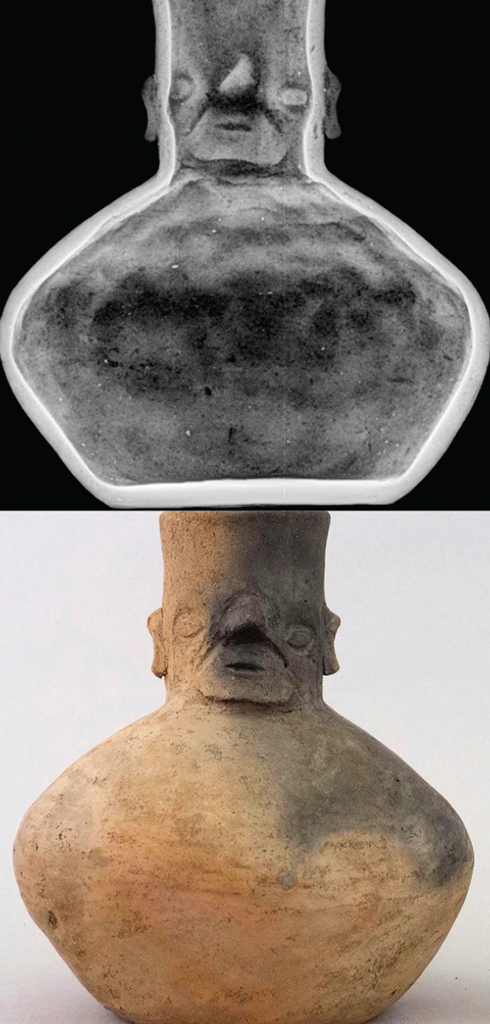
HUMAN SKELETAL LABORATORY
Over the past five years, the Human Skeletal Laboratory has worked on specimens that range in time from 40,000 BP (before present) to recent forensic cases including the 120-year-old skeleton of H. H. Holmes, America’s first serial killer. The laboratory has fostered research relationships with scholars worldwide and within our own Penn community including both the Penn Medicine and Dental Schools. Since 2014, the Lab has attracted over 1,000 undergraduates in the classroom, 17 undergraduate research projects including senior theses, and 15 graduate research projects as part of Ph.D. dissertation research.
Many of the projects include the analysis of ancient teeth: the hardest and most durable tissue in the human body is dental enamel. For example, the photo on page 75 shows isolated upper teeth from one of the skeletal archaeological specimens from Tepe Hissar, Iran. Within the dentition is the hard evidence of the processes of growth and development, leaving markers of both the health and disease status of ancient peoples. Current projects, in paleodentistry and evolutionary dental medicine, highlight the uses of teeth, both ancient and modern, to understand peoples of the ancient past, which give insights into living peoples.
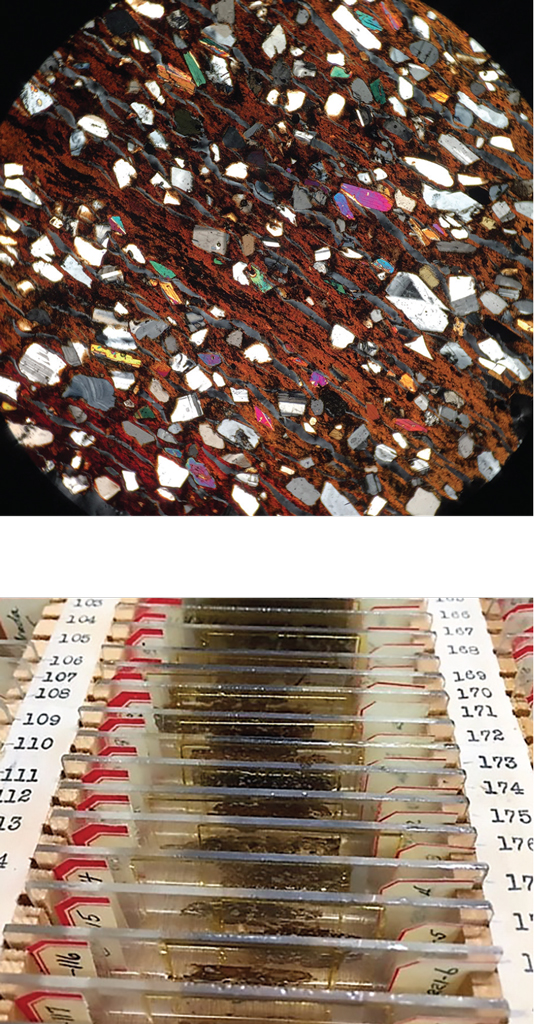
The visualization tools in the Lab, the Scanning Electron Microscope (SEM), polarizing light microscopy, and micro-CT scan analyses, have allowed for a range of research questions to be addressed using state of the art techniques of analysis. For example, many of the skulls (cranium and mandible) in the Morton Collection and from the archaeological sites of Hasanlu and Tepe Hissar have been CT scanned for the assessment of occlusal patterns, indicating how the teeth fit together. The image to the right shows a CB CT scan (Cone Beam CT) of the skull of one of the immature specimens in the Morton Cranial collection. Craniometric measurements are undertaken to show the forming dentition and the relationship of the mouth to airways located behind the mouth and nasal cavity. When used in conjunction with the same images taken on living children a remarkable group of changes emerge. Not only do the front teeth not meet edge-to-edge, but general malocclusions of other teeth are the norm in living children. Indeed, the entire mouth, shape of the dental arcade, and depth of the palate seem to be significantly altered from our evolutionary past.


ARCHAEOMETALLURGY LABORATORY
Archaeometallurgy is the study of the production and processing of metals in archaeology. Interwoven with mining archaeology, archaeometallurgy starts with the investigation of the exploitation of ores in mines and of primary production of metal at smelting sites. At consumer sites including workshops, the processing of metals is investigated. Finished artifacts may also reveal processes involved in their production. Chemical, mineralogical, and metallographic characterization of finds deriving from the metallurgical production chain are part of the scientific analysis in the Archaeometallurgy Laboratory. CAAM maintains about 1,600 mounted metal specimens, one of the largest collections of its kind. The collection is a legacy of the Museum Applied Science Center for Archaeology (MASCA). The samples originate from archaeometallurgical research, both worldwide and over several decades. The specimens are frequently re-analyzed in classes and for student research. In addition, a teaching collection of ores used in prehistoric and historic metal production and polished sections of these specimens is available. By visiting facilities like Next Fab, a makerspace in Center City, students gain insights into metal processing techniques which were already used in antiquity.
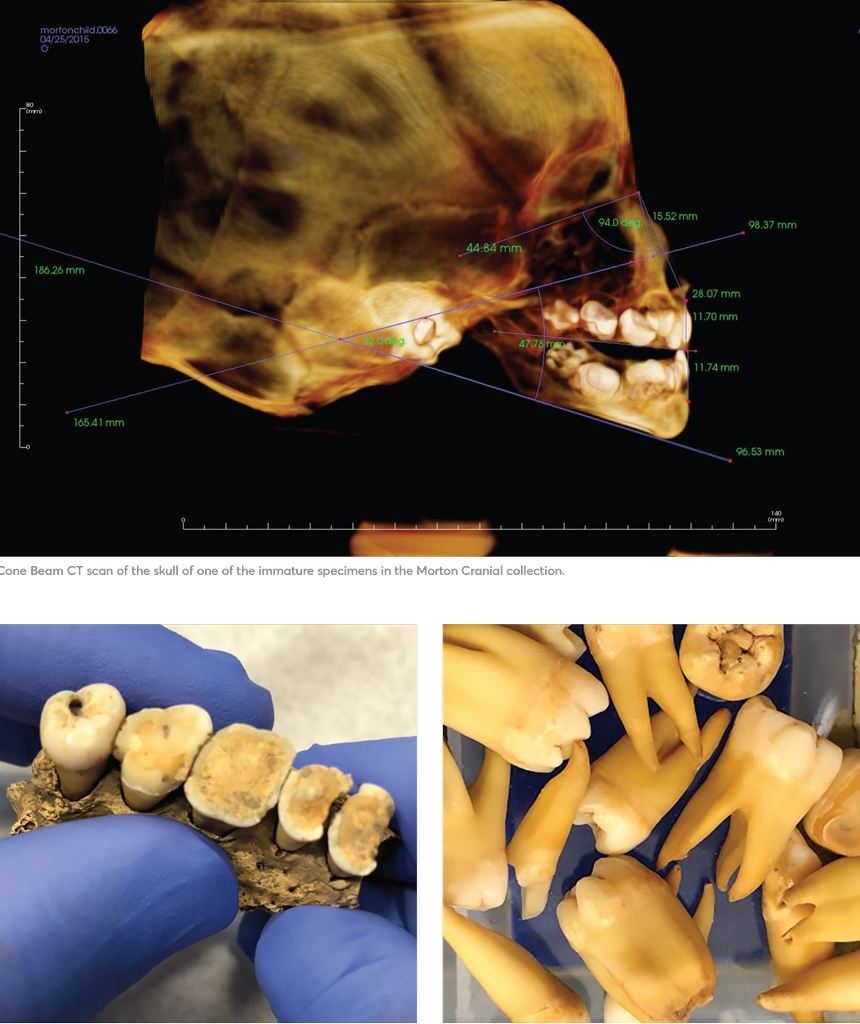
The CAAM Lab offers instrumentation for practical metallography. Besides two metallographic micro- scopes, the lab is equipped with facilities for all steps of sampling and preparation, including cutting with circular saws, mounting in epoxy resin, grinding and polishing with a polishing wheel, and a fume hood for etching. The digital microscope offers the opportunity to take up-to-date micrographs, both non-destructive and metallographic. Initial chemical characterization is done using the scanning electron microscope in the Human Skeletal Lab. We also work collaboratively with colleagues on campus for use of specific instruments and equipment not available in CAAM, such as the Laboratory for the Research on Matter and the Singh Nanotechnology Center.
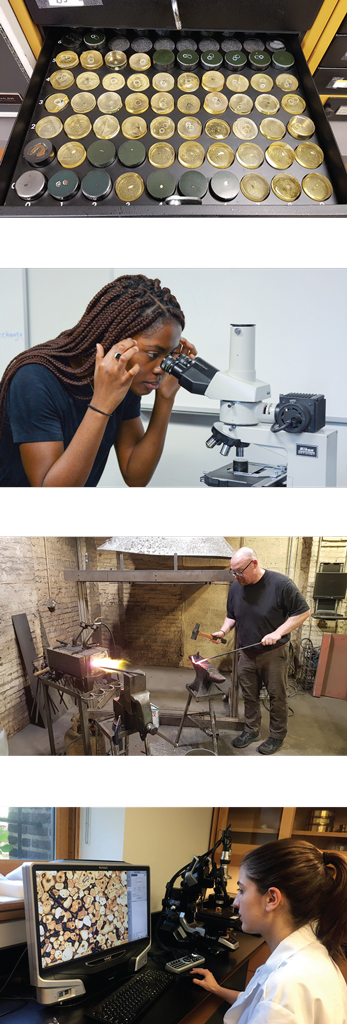
VIRTUAL LABORATORY
In addition to CAAM’s physical labs, a Virtual Lab was created in 2016, providing a powerful cloud-based server for students and researchers to collaborate on data processing. Digital archaeology focuses on working with the archaeological evidence we use to study the past. Through coursework students are introduced to the fundamentals of conducting research with computers, work with key forms of data, and learn how to use a variety of digital tools and technologies such as relational databases, 3D modeling, and image processing for the collection, analysis, visualization, and dissemination of archaeological data. At the graduate level, students use spatial analysis to investigate past human-space interactions. Training in different settings allows students to gain experience with various digital technologies: in the Museum’s Collections Study Room for photogrammetry on an accessioned object and outside, for example, at the Morris Arboretum’s Bloomfield Farm, for hands-on UAV flight training. The laboratory for zooarchaeology was established in 2015, though archaeologists at Penn have been studying the dynamic relationship of people with animals since the 1970s. Shelves stacked with boxes and trays surround a central table with tools for measuring and examining ancient bones. Those boxes and trays are full of the lab’s most important collection: carefully prepared skeletons from modern animals. Ancient bone fragments are matched with the shapes of modern skeletons to identify them and reconstruct ancient lifeways. Artist Travis Lumpkin made ink drawings of catfish skeletal elements as a student project in scientific illustration. The drawings highlight delicate surface features that archaeologists use to make identifications from small fragments of bones. CAAM’s legacy collection from earlier generations of research comprises 65 skeletons recorded on cards in a metal file box. The Zooarchaeology Lab now holds more than 500 individuals, including more than 100,000 individual bones. All but the tiniest vertebrae and finger bones have been labeled in ink so that individual bones from more than one skeleton can be viewed and compared from all angles. Specimen no. 1 in the Zooarchaeology Lab catalog is a partial skeleton of a white-tailed fawn collected in 1973. Natural history museums seldom include immature animals like this one but we depend on such specimens for detailed zooarchaeological reconstructions. For key resources like cattle, we hold specimens of five different states of maturity.
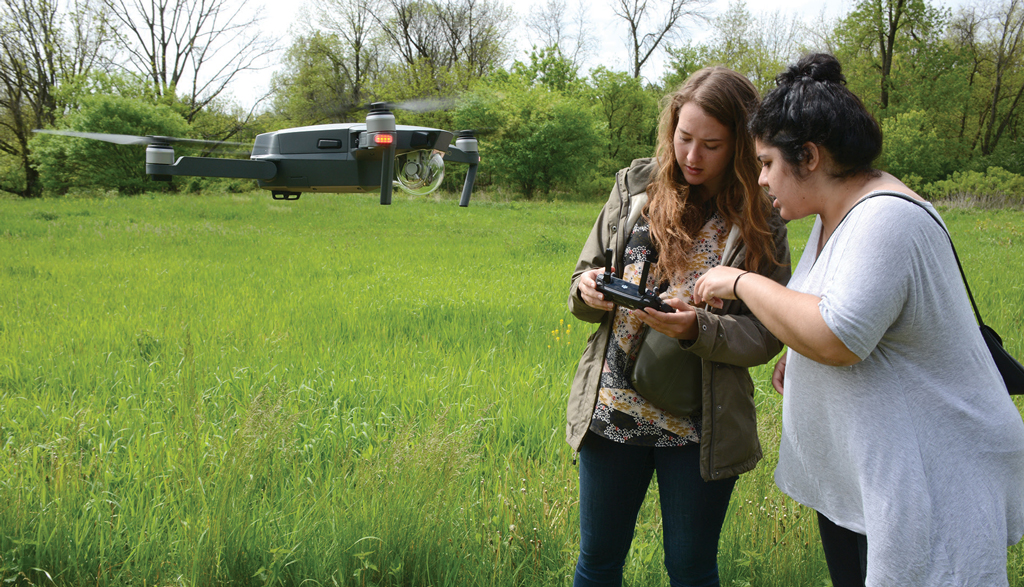
Where are these skeletons from? Of those early specimens from no. 1 to no. 65, records show that some were prepared at Penn Vet from animals that had been cared for at the New Bolton Center, some had been prepared as student projects, and some had started out as meals enjoyed by Museum staff (we have several incomplete turkey skeletons). We have added to this collection from gifts from other museums, purchases from scientific preparators, and specimens provided by farmers, meat cutters, fishermen, fur trappers, and hunters. Skeletons of several now-rare hoofed animals have been loaned to us by colleagues at the Drexel Academy of Natural Sciences. Students and researchers have handled, compared, sketched, measured, photographed, and made x-ray images of these modern bones to continue drawing connections with the past. Experimental archaeology helps us understand how bones from archaeological sites have changed. A friendly German Shepherd was given this cattle scapula (or shoulder blade) to gnaw on for 36 hours. We seldom find a whole bone like the one on the right in an archaeological site: these controlled experiments in bone destruction (part of the science of taphonomy) help us understand why.
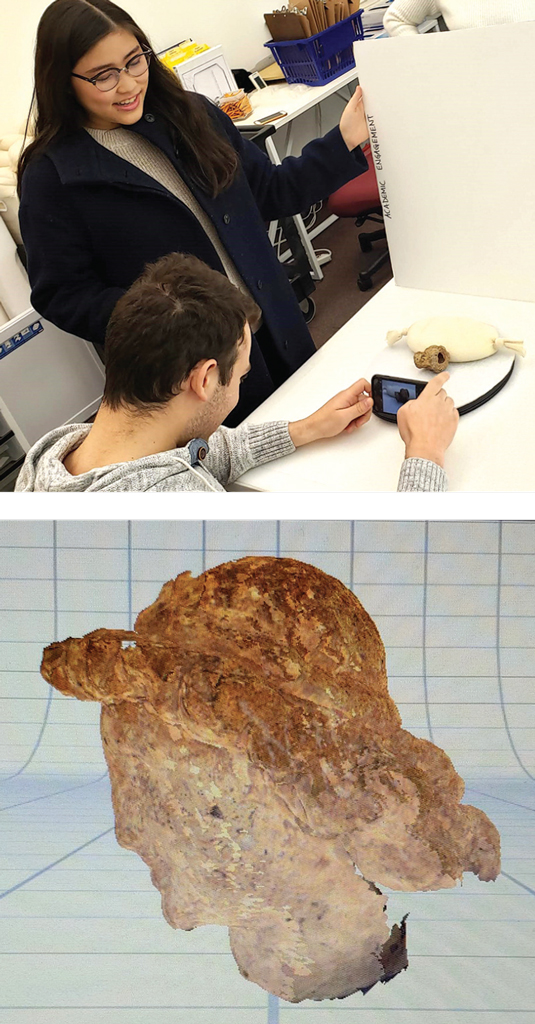
MUSEUM AND COMMUNITY COLLABORATIONS
The success of our program rests on close collaboration with the Penn Museum’s curatorial sections, Archives, and Academic Engagement department to maximize student experience with the vast Museum collection. Outside of our labs, we engage with general audiences with outreach activities, many organized with our colleagues from Learning and Public Engagement. Look for us in the galleries during special events such as science-themed Daily Digs or come and meet us during our annual behind-the-scenes open labs every October on International Archaeology Day.
| CAAM BY THE NUMBERS | |
|---|---|
| Year founded | 2014 |
| Teaching specialists, each representing a different area of 8 expertise in archaeological science | 8 |
| Members of the Faculty Steering Committee, representing 10 CAAM’s stakeholder academic departments | 10 |
| Consulting Scholar | 1 |
| Courses created or developed for CAAM’s programs | 20 |
| Undergraduate students enrolled or have completed the 15 6 CU Minor in Archaeological Science since its creation in Fall 2016 | 15 |
| Graduate students enrolled in the 4 CU Grad Certificate in 3 Archaeological Science since its creation in Fall 2018 | 3 |
| Students, since 2014, in CAAM classes, labs, and recitations | 2,016 |
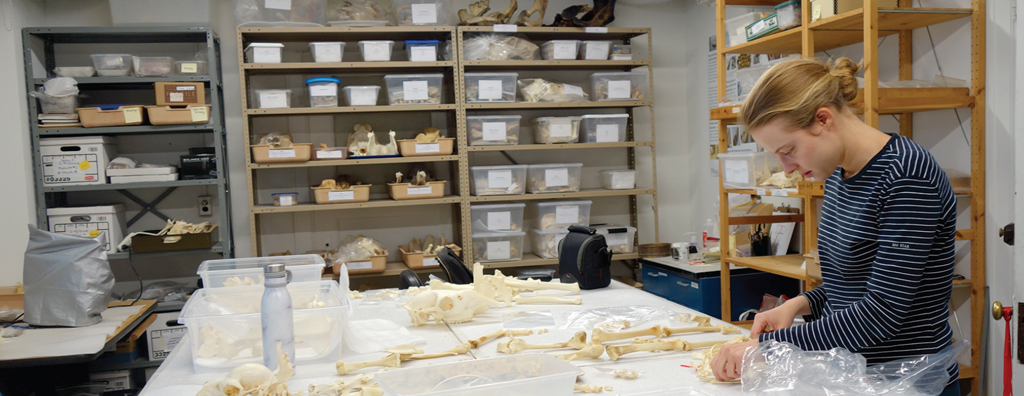
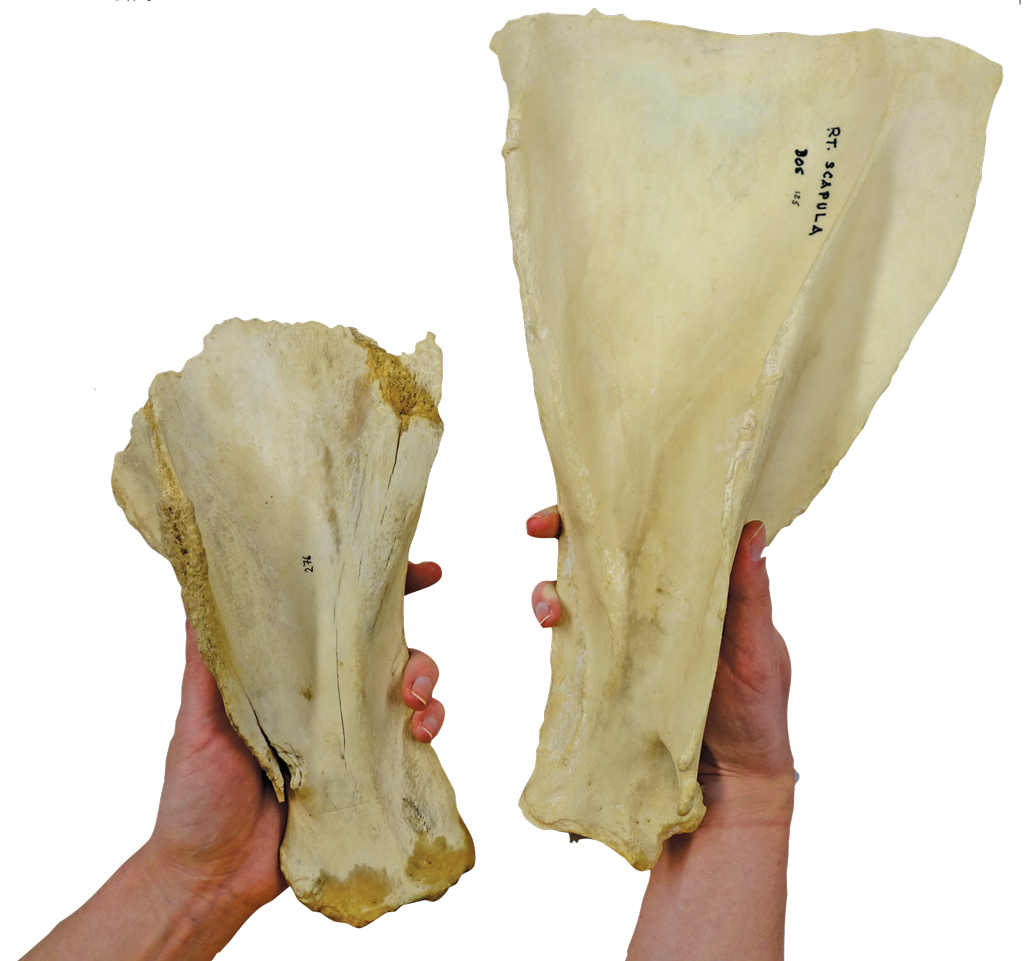
ABOUT THE AUTHORS
Marie-Claude Boileau, Ph.D., is the Laboratory Coordinator and Teaching Specialist for Ceramics; Moritz Jansen is the Teaching Specialist for Archaeometallurgy; Janet Monge, Ph.D., is Associate Curator-in-Charge and Keeper of Collections, Physical Anthropology Section; Katherine Moore, Ph.D., is the Mainwaring Teaching Specialist for Archaeozoology; and Chantel White, Ph.D., is the Teaching Specialist for Archaeobotany.
To learn more about our programs and to meet our students, please visit us at www.penn.museum/ caam. Follow us on twitter at CAAMatPenn for weekly updates and to see what our students and teaching specialists are doing in the labs and in the field.

